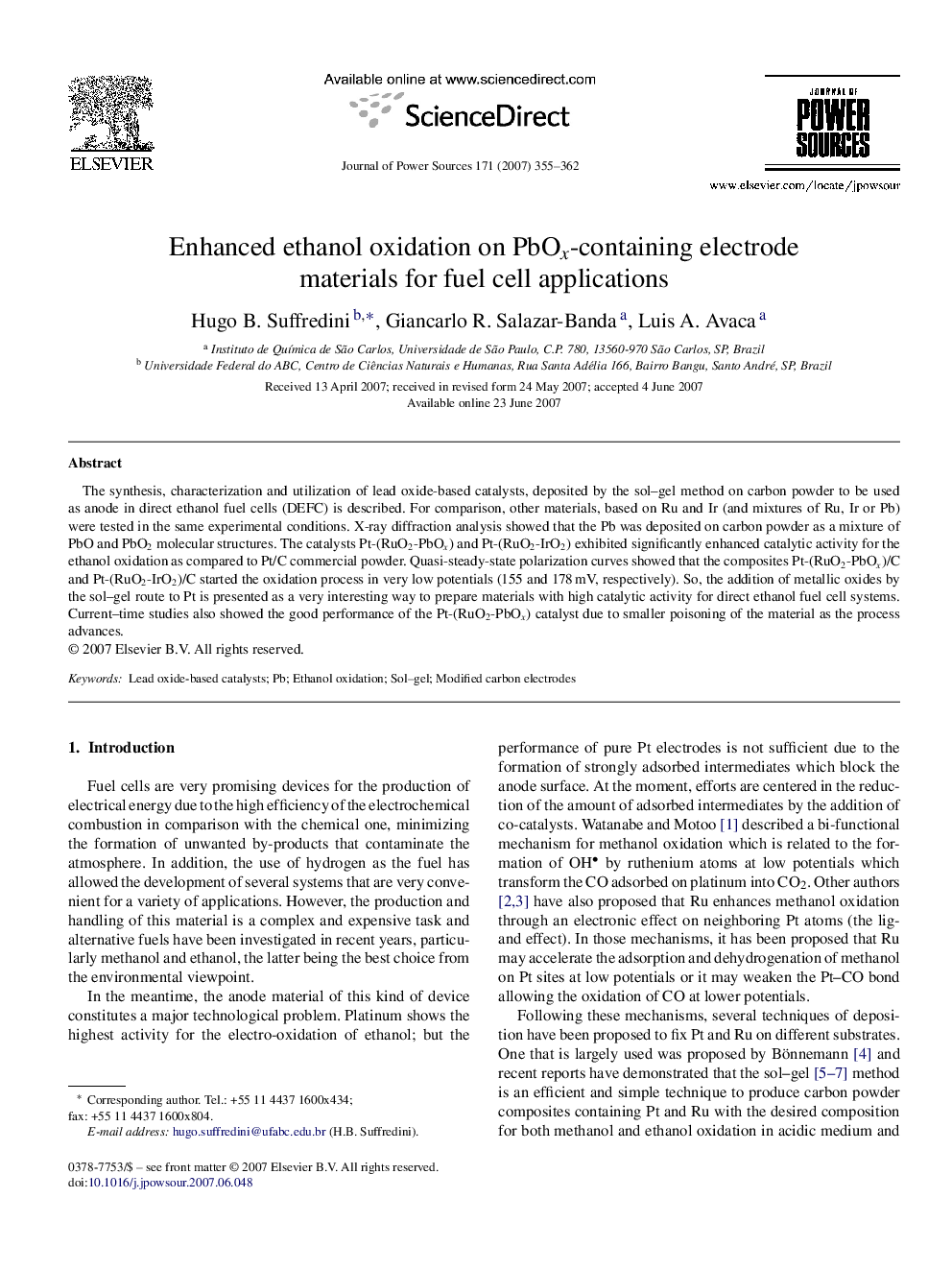| Article ID | Journal | Published Year | Pages | File Type |
|---|---|---|---|---|
| 1286340 | Journal of Power Sources | 2007 | 8 Pages |
The synthesis, characterization and utilization of lead oxide-based catalysts, deposited by the sol–gel method on carbon powder to be used as anode in direct ethanol fuel cells (DEFC) is described. For comparison, other materials, based on Ru and Ir (and mixtures of Ru, Ir or Pb) were tested in the same experimental conditions. X-ray diffraction analysis showed that the Pb was deposited on carbon powder as a mixture of PbO and PbO2 molecular structures. The catalysts Pt-(RuO2-PbOx) and Pt-(RuO2-IrO2) exhibited significantly enhanced catalytic activity for the ethanol oxidation as compared to Pt/C commercial powder. Quasi-steady-state polarization curves showed that the composites Pt-(RuO2-PbOx)/C and Pt-(RuO2-IrO2)/C started the oxidation process in very low potentials (155 and 178 mV, respectively). So, the addition of metallic oxides by the sol–gel route to Pt is presented as a very interesting way to prepare materials with high catalytic activity for direct ethanol fuel cell systems. Current–time studies also showed the good performance of the Pt-(RuO2-PbOx) catalyst due to smaller poisoning of the material as the process advances.
